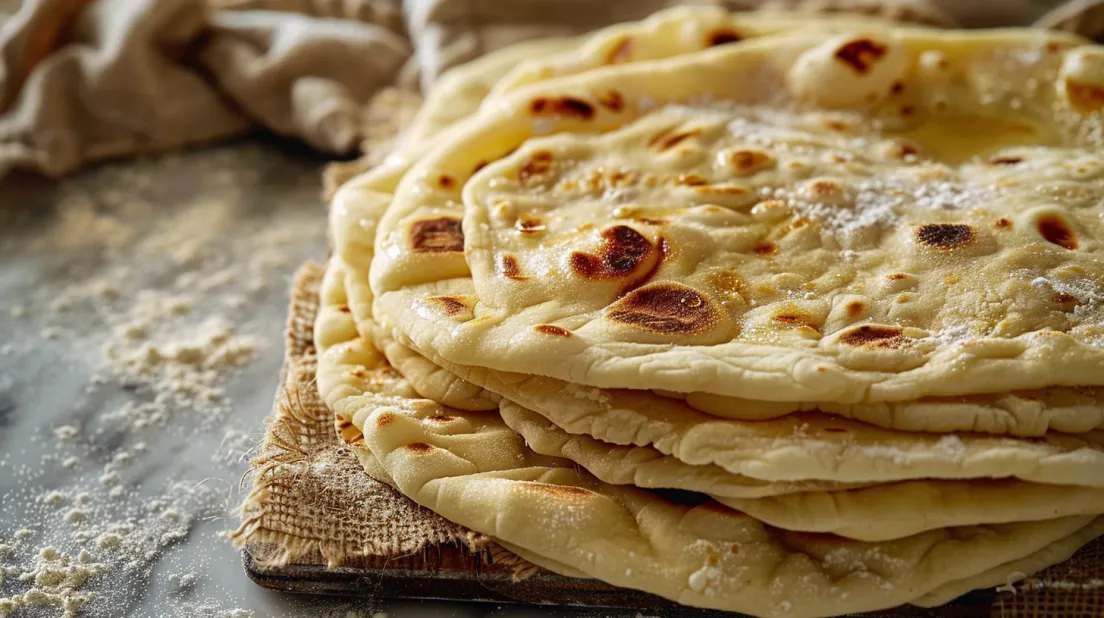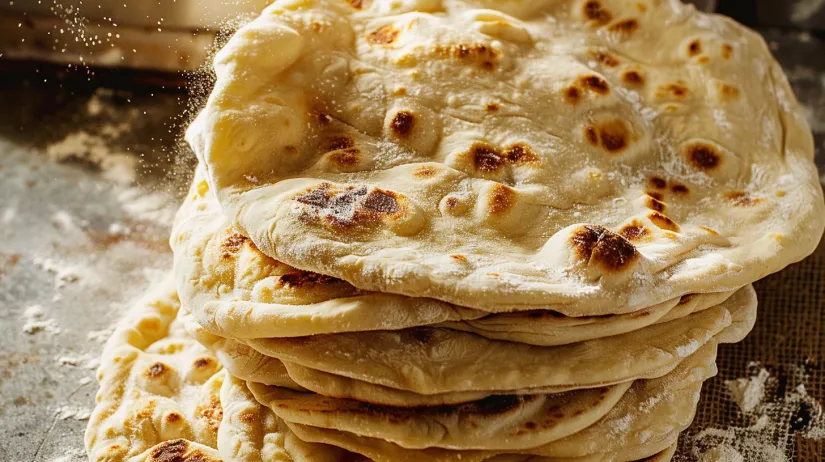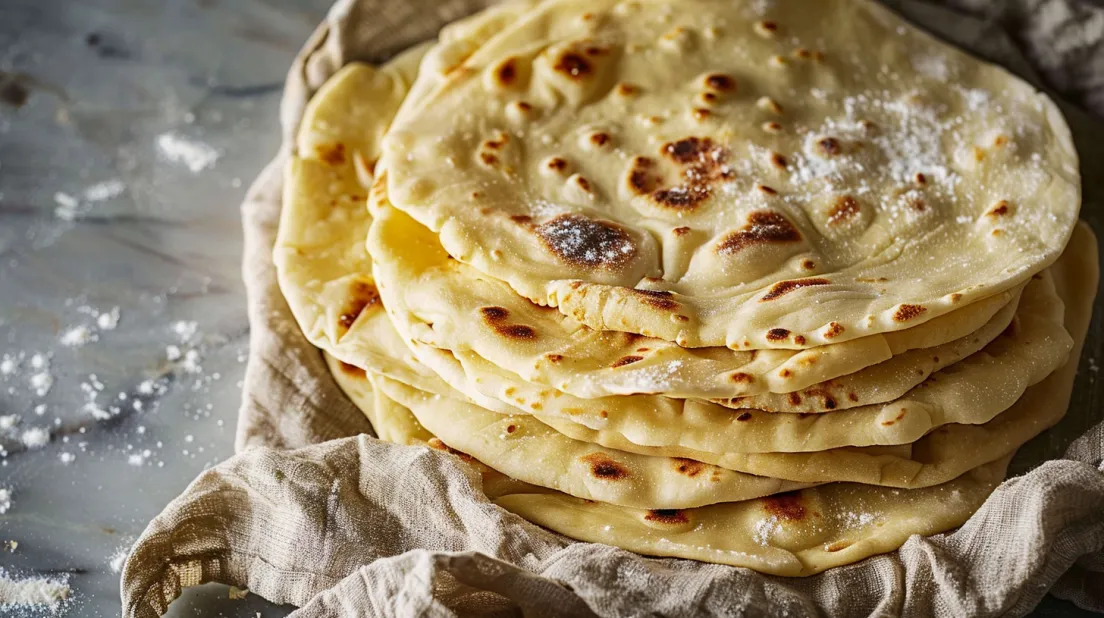 Pin
Pin
This easy flatbread is perfect when you need a simple bread for dipping or wrapping and you do not want to fuss with yeast. My kitchen fills with the smell of warm bread in just minutes and I always come back to this recipe on busy weeknights or when unexpected guests show up for dinner.
I first made these flatbreads when my oven broke so I needed a stovetop solution. They turned out even better than I hoped and now they are a family favorite for everything from gyros to soup sides.
Ingredients
- Plain flour: for a soft yet sturdy base choose a good quality all-purpose or bread flour for best texture
- Full fat plain yogurt: brings moisture and gentle tang use thick Greek style if possible for richer dough
- Baking powder: helps the flatbread puff up tender inside
- Salt: balances flavor and brings out the taste of the flour
- Vegetable oil for frying: keeps the flatbreads crisp and golden neutral oils like sunflower or canola work best
Step-by-Step Instructions
- Make the Dough:
- Mix flour yogurt baking powder and salt thoroughly in a large bowl and knead lightly with your hands until a sticky dough forms. The dough should be soft and a bit tacky but not dry or stiff.
- Rest the Dough:
- Cover the bowl with a clean tea towel and let the dough rest at room temperature for thirty minutes. This resting time helps the dough relax making it much easier to roll out later.
- Shape the Flatbreads:
- Dust your surface generously with flour. Divide the dough into six to eight equal pieces and roll each one out into thin even rounds using a rolling pin. Add extra flour under and over the rounds as needed to prevent sticking.
- Preheat the Pan:
- Place a nonstick or cast iron frying pan over high heat until it is smoking hot. This extreme heat helps bubbles form and gives the bread its signature spots.
- Fry the Flatbreads:
- Dip a bunched up paper towel into vegetable oil and quickly rub the hot pan to coat it lightly. Lay one rolled out dough round onto the pan and let it cook for up to a minute until bubbles appear and the bottom is golden. Flip and cook for twenty to thirty seconds more until both sides are cooked. Repeat with remaining dough re-oiling the pan before each piece.
 Pin
Pin
My favorite part is watching the dough bubble and puff up in the pan. Making these flatbreads with my kids turns dinner into a hands-on project and everyone wants to be in charge of flipping the breads.
Storage Tips
Store any extra flatbreads in an airtight container or zip bag once they are completely cool. They stay good at room temperature for about a day or refrigerate for up to three days. For longer storage freeze with parchment between each flatbread and reheat in a dry skillet or oven.
Ingredient Substitutions
You can use Greek yogurt for a tangier flavor or low fat yogurt if needed but full fat gives the softest texture. If you are out of plain flour try bread flour for a chewier bite. For self-rising flour skip adding salt and baking powder.
Serving Suggestions
These flatbreads make an easy base for wraps gyros or even simple homemade pizzas. I love tearing them into pieces and serving alongside curries soups or hummus. Brush with a little garlic butter for a treat.
 Pin
Pin
Cultural and Historical Notes
Flatbreads have been a staple in kitchens across the world from Indian chapatis to Greek pitas and Middle Eastern laffa. What I love most is how every culture puts its own stamp on this versatile bread often adapting to the ingredients and tools on hand.
Frequently Asked Questions About the Recipe
- → Can self-rising flour be used?
Yes, self-rising flour is suitable. Simply omit the additional salt and baking powder as it's already included.
- → Why is my dough sticky when rolling?
A sticky dough is normal. Use extra flour on your surface and rolling pin, but don't add more to the dough itself for best texture.
- → What's the best pan for cooking?
A non-stick or cast iron frying pan works best and should be preheated until very hot before adding the dough.
- → How do I get flatbreads to bubble?
Make sure your pan is smoking hot, and roll the dough thinly. Bubbles form as the dough cooks rapidly.
- → Can other yogurts be used?
Full-fat plain yogurt gives the softest texture, but low-fat yogurt can work, though results may be less tender.
